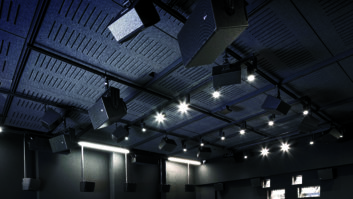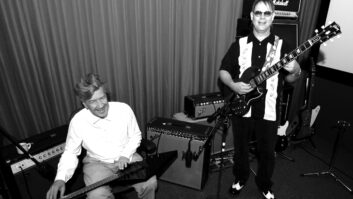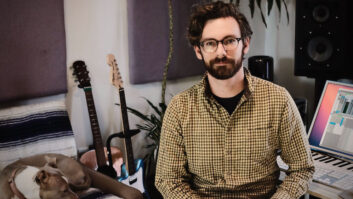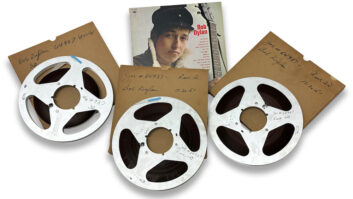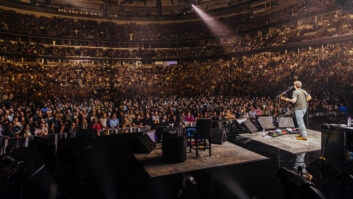Bob Barsotti on Bill’s Greatest Compliment
Bill always told this story about the greatest compliment he ever received. . In the bathroom at the Fillmore one night, [standing at the urinals] he had a guy on his left and one on his right, talking to each other. One said, ‘Who’s playing here tonight?’ the other answered, ‘Who care’s? It’s the Fillmore!’
Memorable Show: U2 at California Hall: Bob Barsotti
California Hall was a little Beaux Arts ballroom, very ornate with a fancy proscenium stage and a big dance floor. We didn’t normally do shows there, but U2 had done so well at the Old Waldorf club for their first show we decided to do something special for their return. They wanted to videotape, and as the hall was old and underpowered, we put a generator outside in the street to run the lights. In the middle of the show, the guard stationed at the generator left to go to the bathroom inside the hall. Some guy in an apartment building across the street, who’d been bothered by the generator noise all night saw him leave, and came out and turned the generator off. Well, sometimes diesel generators don’t like to start back up when they’re stopped like that. The sound was still working, but the lights were out, and the band stopped playing. We ran outside, and the generator wouldn’t start. Everyone was saying, “What are we going to do?”
I said, “Well, we’ve got a bunch of security down front and they’ve all got flashlights.” And the band said, “Great, get ‘em down there and we’ll go back on.” And that’s what they did. They played the rest of the show with our security holding flashlights on Bono.
They were really young and raw, and they weren’t great players yet, but their energy was amazing and they really came through that night. I don’t think they got their video, but it was a great show!”
John Meyer on Philosophy
In the ’70s some guitar speakers surfaced that people were using [in sound systems]. They weren’t very clean, but they were more powerful. We started to get systems that had a sound, and then some people started to “build” sound for the band. People had different systems to do different shows. I didn’t like that concept; I always wanted to build systems that were very universal, that we could use for classical or Herb Alpert, or Credence. I wanted flexibility; to me that was much more practical. There have always been two philosophies [in sound design]: one to make it sound the way you like, and one to reproduce it accurately. The first way is kind of like a hobby, the second is more practical from a manufacturing point of view.
Why San Francisco? John Meyer
In the ’60s, when Alan Watts and all those people were taking LSD it kind of woke everybody up to possibilities. People were willing to explore and try things. That’s what we did: like with the Grateful Dead, where we tried all sorts of experiments. We’d build arrays of speakers; we’d put speakers in a barrel. People were trying to figure out what would make the whole musical phenomenon more exciting.
The Reason: John Meyer
The bottom line is, it’s really fun to do a concert and have people be happy and forget their problems. Bill Graham used to talk about how much trouble and expense people went through to come to a concert and how, if it wasn’t fun, they weren’t going to come back. He always reminded us that we’re not just out here to make money; the real motive has to be to entertain people and make it worthwhile.
Meyer on Philosophy
Then, in the ’70s some guitar speakers surfaced that people were using. They weren’t very clean, but they were more powerful We started to get systems that had a sound, and some people started to “build” sound for the band. People had different systems to do different shows. I didn’t like that concept; I always wanted to build systems that were very universal, that we could use for classical or Herb Alpert, or Credence. I wanted flexibility; to me that was much more practical.
“There have always been two philosophies [in sound design]: one to make it sound the way you like, and one to reproduce it accurately. The first way is kind of like a hobby, the second is more practical from a manufacturing point of view.
Why San Francisco? John Meyer
It all started in the ’60s, when Alan Watts and all those people were taking LSD; it kind of woke everybody up to possibilities. People were willing to explore and try things. We tried all sorts of experiments with the Grateful Dead. We’d build arrays of speakers, we’d put speakers in a barrel. People were trying to figure out what would make the whole musical phenomenon more exciting. It s really fun to do a concert and have people be happy. And forget their problems. bill graham liked to talk about how it was a lot of trouble for people to come to a concert, park their cars, borrow money from their parents, buy t shirts eat dinner, all very expensiv stuff, park in a dirty lot with the risk of getting car dinged, seats someone else is sitting in, if it isn’t entertaining, it isn’t fun they’re not going to com e back. We cant’ forget what we’re doing, we’re not just out here ot make money the motive should be to entertain people, to make them feel like this is worthwhile.
Why San Francisco? Jim Downey
When I started we were a bunch of young kids, but it was populated with really smart people, and everybody after you’d stacked sound systems for a while, anything you could think of that could make it easier, you did.
My First Gig With the Grateful Dead: Dan Healy
In those days there were only a couple of sound companies around. In the East Bay there was Swanson Sound, and then there was McCune in the City; those were best in the Bay Area. So I went and rented all the equipment I could get. Unfortunately, the equipment these places had were not mutually compatible. I used to know the lady who was the secretary in the office of the Fillmore Corporation, so I went and conned her into letting me in to the Fillmore a day or two in advance, and so I piled all this equipment in there and rearranged all the connectors and made this huge sound system. It was a monstrosity, but it worked.
The Wall of Sound: Dan Healy
The Wall of Sound was kind of like a huge breadboard; it was the coming together of ideas of a lot of different people—there were some of Owsley’s ideas in there; a fellow named Ron Wickersham…
Bill Graham Memorial Service: Don Pearson
Very cosmic, calm and peaceful. 50,000 people just showed up, and it was free, and everybody in the world wanted to play. They had to turn down the Rolling Stones and a lot of other bands.
Highlights: Aaron Neville and Joan Baez doing “Amazing Grace.” Neil Young, Santana The Dead, Boz Skaggs. Could only have so much. [I was] FOH mixer for the whole day. I coudn’t leave FOH because of the crowd.
